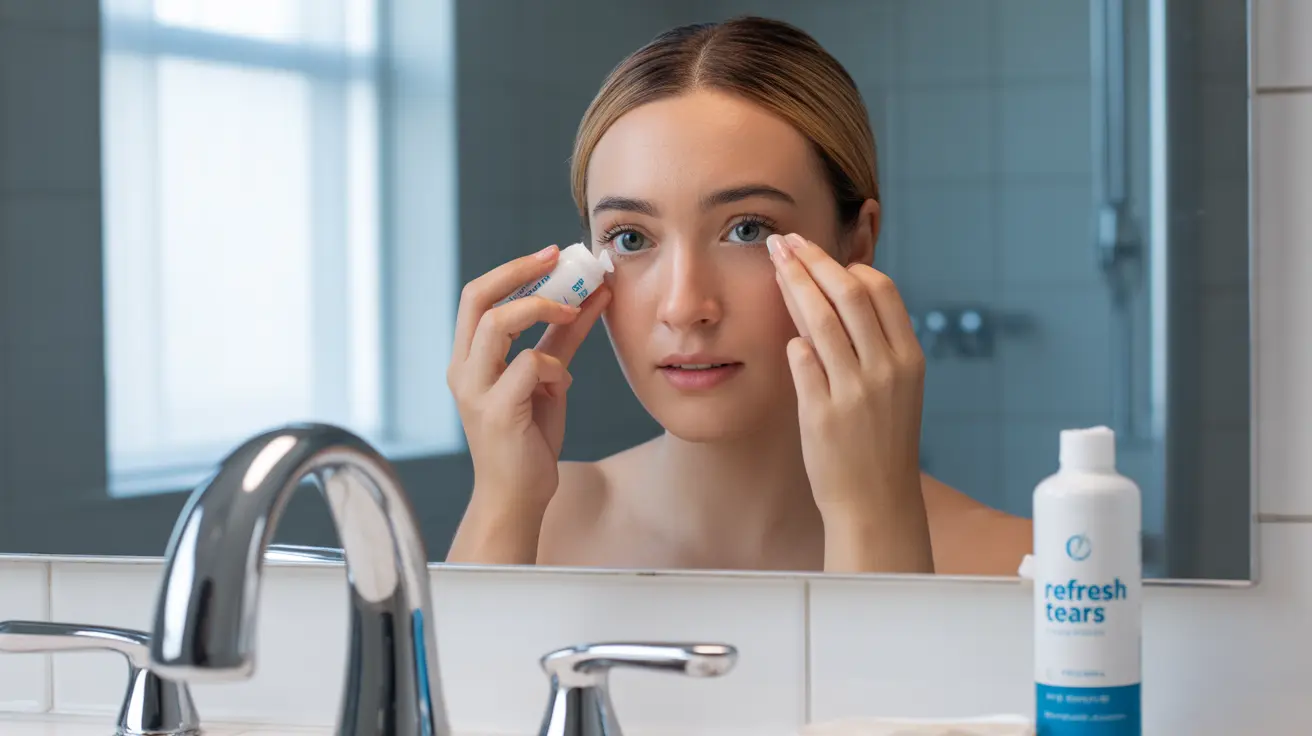Living with dry eye syndrome while wearing contact lenses can be challenging, but understanding the right approaches to management and care can make a significant difference in your comfort. Whether you're experiencing symptoms or looking to prevent dry eye issues, this comprehensive guide will help you navigate wearing contacts while managing dry eye syndrome effectively.
With the right knowledge about lens types, treatment options, and preventive measures, you can maintain healthy eyes and comfortable lens wear, even if you're prone to dry eye symptoms. Let's explore everything you need to know about managing contact lenses with dry eye syndrome.
Understanding Dry Eye Symptoms in Contact Lens Wearers
Contact lens wearers often experience distinct symptoms when dealing with dry eye syndrome. Common indicators include:
- Burning or stinging sensations
- Feeling like there's something in your eye
- Blurred vision that improves with blinking
- Increased sensitivity to light
- Redness and irritation
- A gritty feeling under the lenses
These symptoms typically worsen throughout the day and may become more noticeable during activities requiring sustained visual focus, such as working on a computer or reading.
Selecting the Right Contact Lenses for Dry Eyes
The type of contact lens you choose can significantly impact your comfort level when dealing with dry eye syndrome. Modern lens materials and designs specifically address moisture retention and oxygen permeability.
Silicone Hydrogel Lenses
These advanced lenses allow more oxygen to reach your eyes while maintaining moisture levels. They're often recommended as a first-line option for dry eye sufferers who wear contacts.
Daily Disposable Lenses
Single-use lenses eliminate the buildup of deposits and reduce the risk of contamination, making them an excellent choice for sensitive eyes prone to dryness.
Treatment Strategies and Management Options
A multi-faceted approach to managing dry eye syndrome while wearing contacts often yields the best results:
Artificial Tears and Lubricants
Choose preservative-free artificial tears specifically formulated for use with contact lenses. Always verify compatibility with your specific lens type.
Proper Lens Care Routine
Follow these essential steps:
- Clean lenses thoroughly with appropriate solutions
- Replace lenses according to schedule
- Take regular breaks from lens wear
- Never sleep in your contacts unless specifically approved by your eye care provider
Lifestyle Modifications for Better Eye Health
Simple changes in your daily routine can significantly improve your comfort with contact lenses:
Environmental Adjustments
- Use a humidifier in dry environments
- Avoid direct air flow from fans or air conditioning
- Take regular breaks during screen time using the 20-20-20 rule
- Position computer screens below eye level to reduce eye strain
Dietary Considerations
Incorporate foods rich in omega-3 fatty acids and stay well-hydrated throughout the day to support overall eye health and moisture levels.
Frequently Asked Questions
What are the symptoms of dry eye syndrome when wearing contact lenses, and how can I tell if my lenses are causing it? Contact lens-related dry eye symptoms include burning, stinging, blurred vision, and a feeling of grittiness. If these symptoms improve when you remove your lenses, they're likely contributing to the problem.
How can I manage dry eye symptoms while wearing contact lenses, and what are the best treatment options? Management strategies include using preservative-free artificial tears, switching to daily disposable lenses, maintaining proper hygiene, and taking regular breaks from lens wear. Your eye care provider may also recommend specific treatments like punctal plugs or medicated eye drops.
What are the best contact lens types for people with dry eye syndrome, and how do they help alleviate discomfort? Silicone hydrogel and daily disposable lenses are typically best for dry eye sufferers. These materials offer superior oxygen permeability and moisture retention, while daily disposables eliminate deposit buildup issues.
Can I still wear contact lenses if I have severe dry eye syndrome, and what precautions should I take? Yes, many people with severe dry eye can still wear contacts by following proper management strategies, using appropriate lens types, and maintaining regular check-ups with their eye care provider. Some may need to reduce wearing time or alternate with glasses.
How can lifestyle changes, such as diet or reducing screen time, help prevent or reduce dry eye symptoms in contact lens wearers? Lifestyle modifications like maintaining proper hydration, eating omega-3 rich foods, using the 20-20-20 rule for screen breaks, and managing environmental factors can significantly improve comfort and reduce symptoms.




